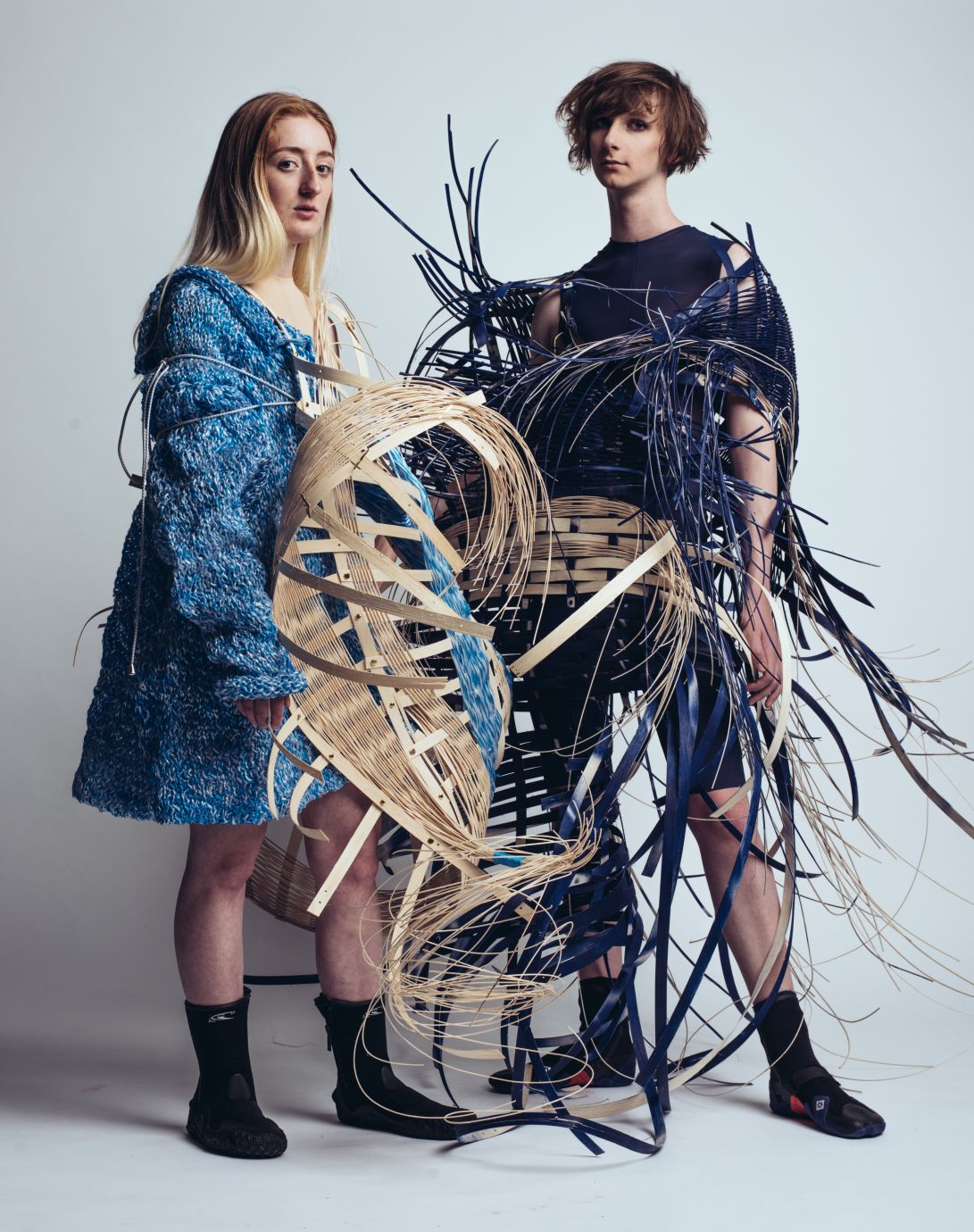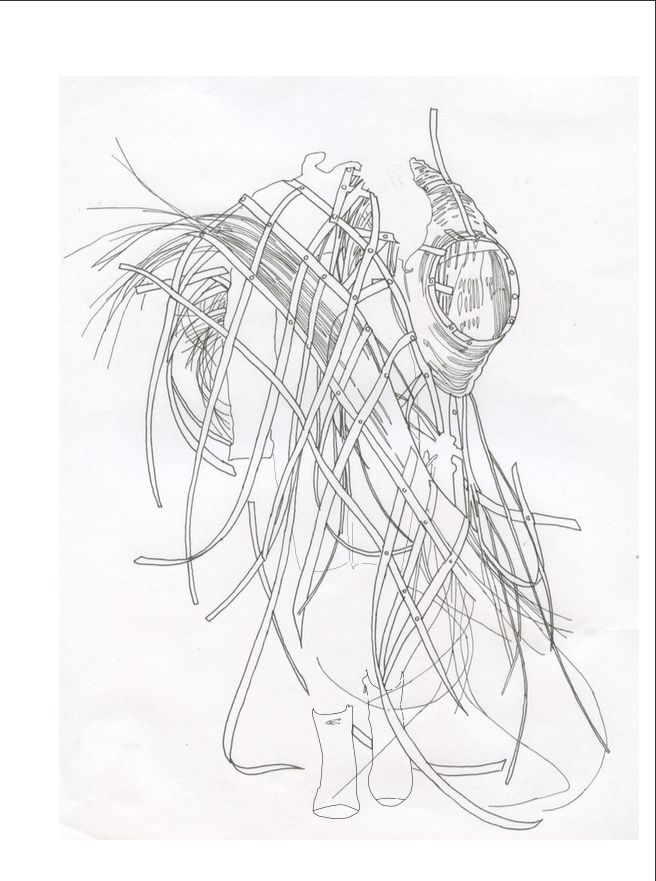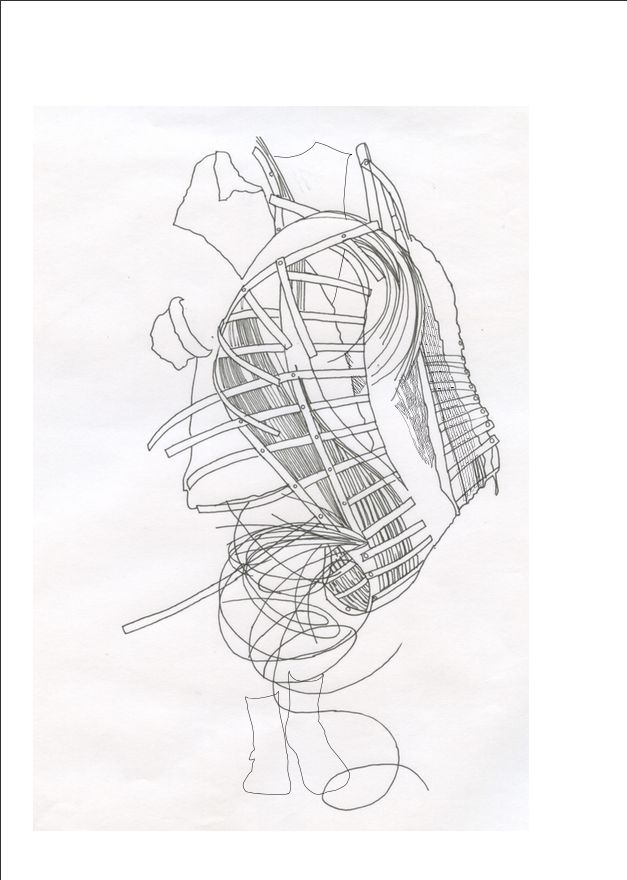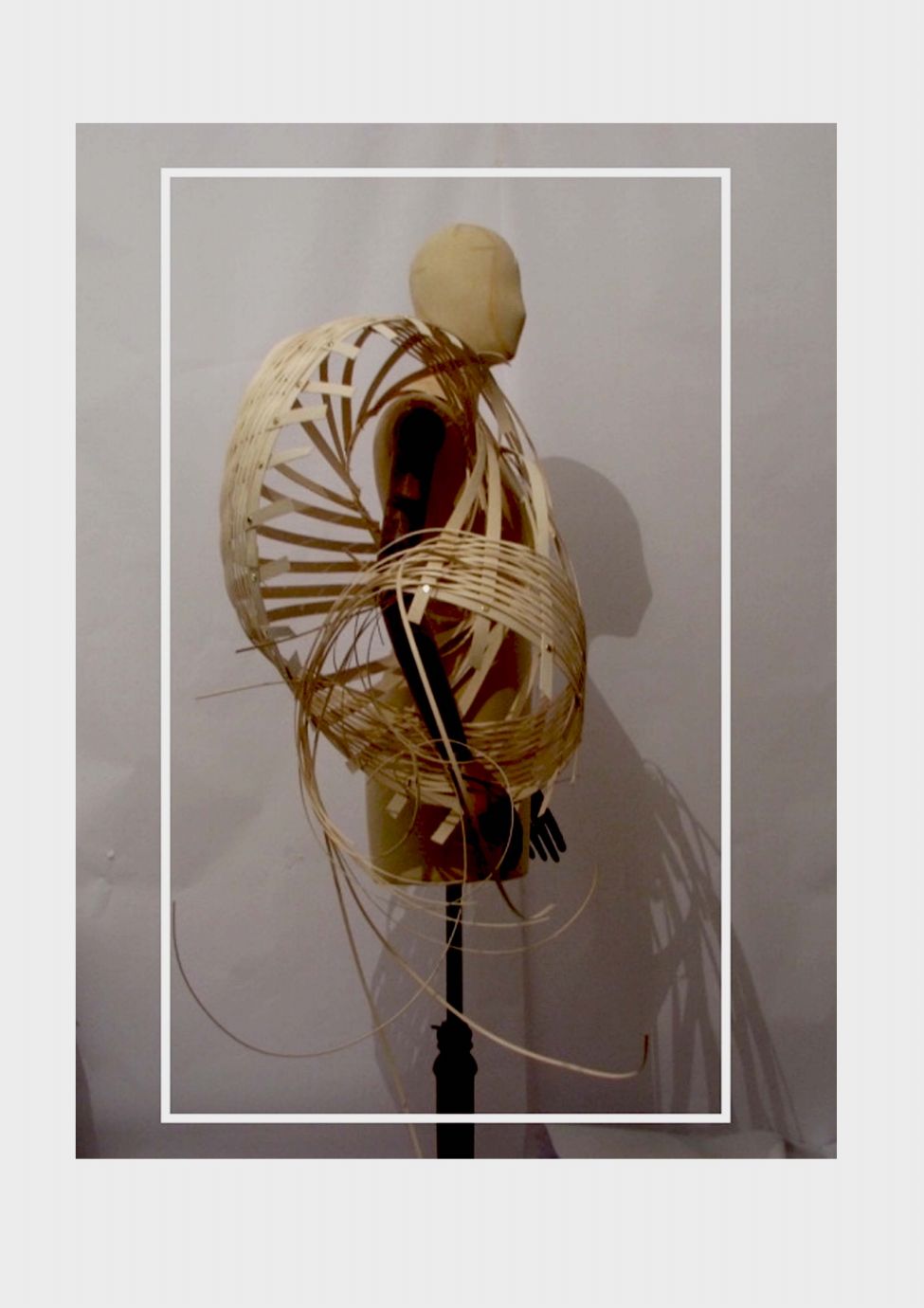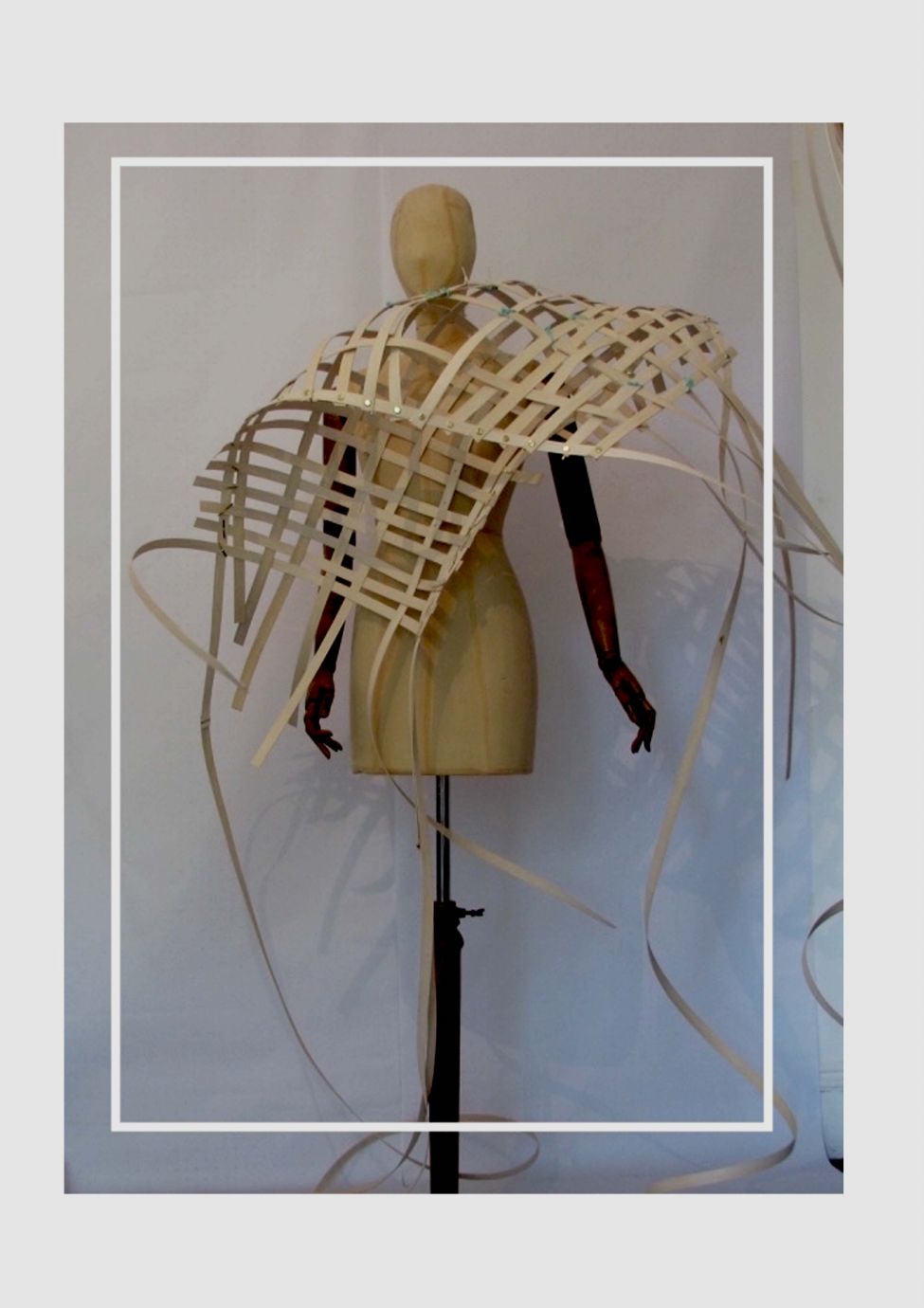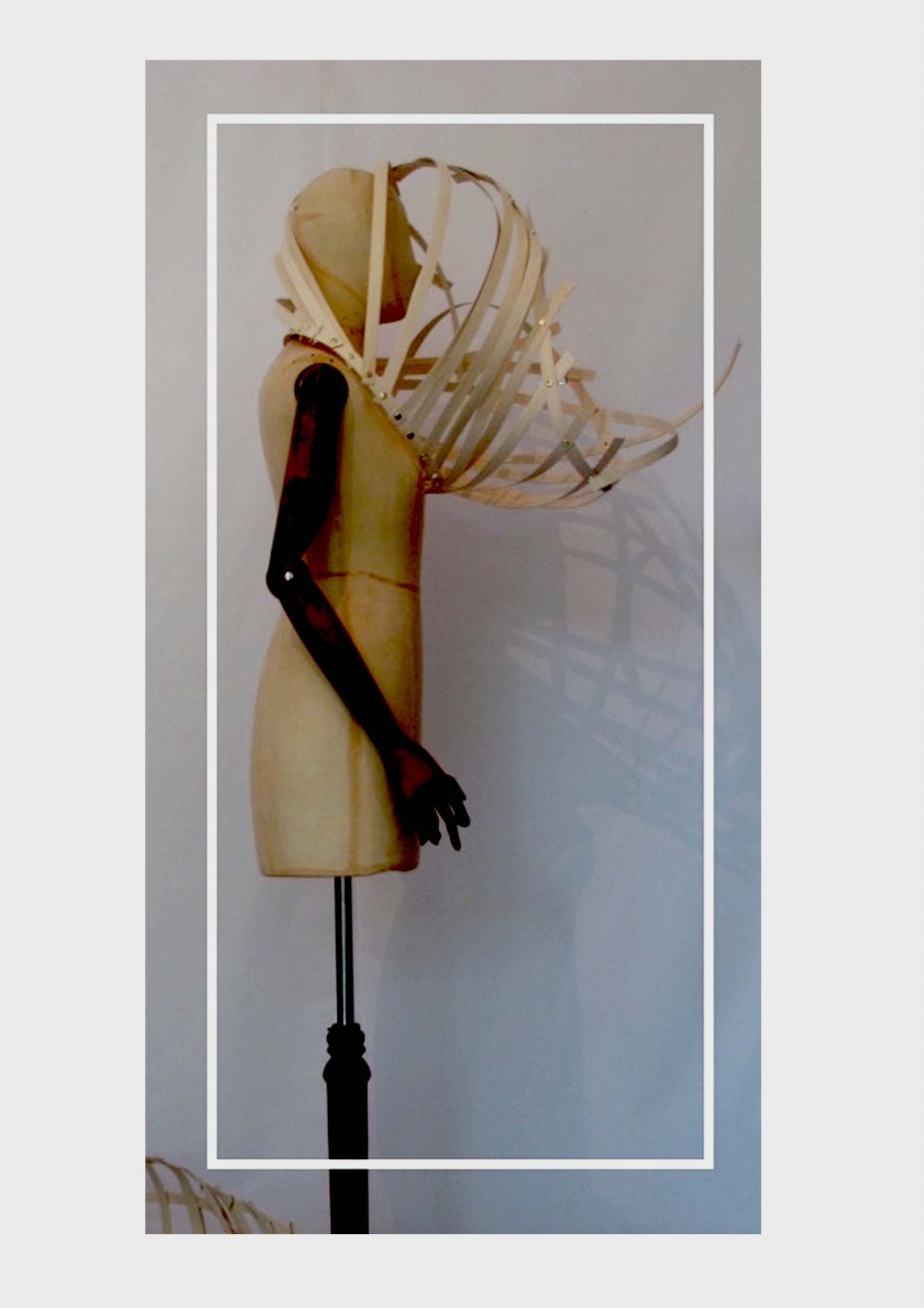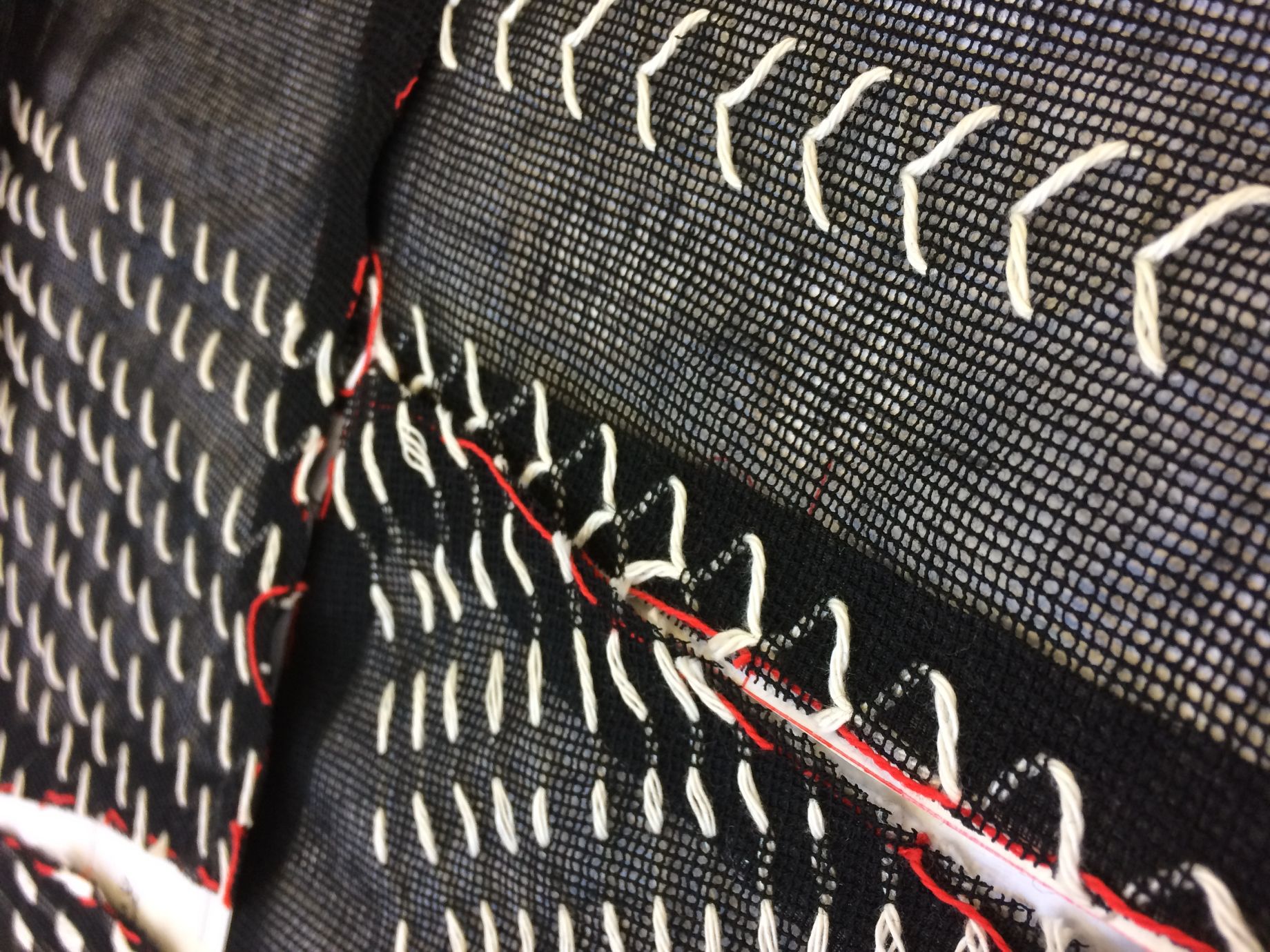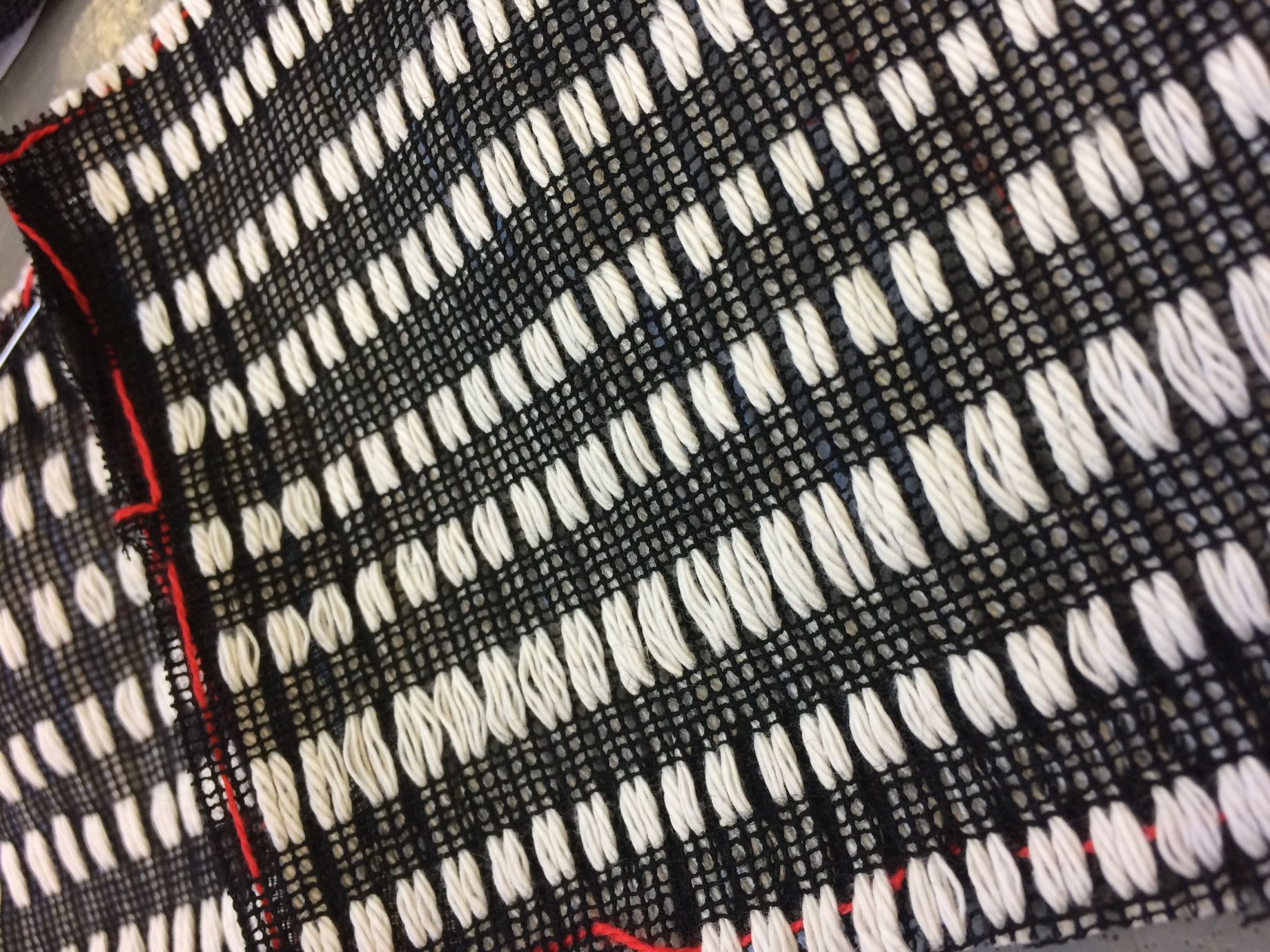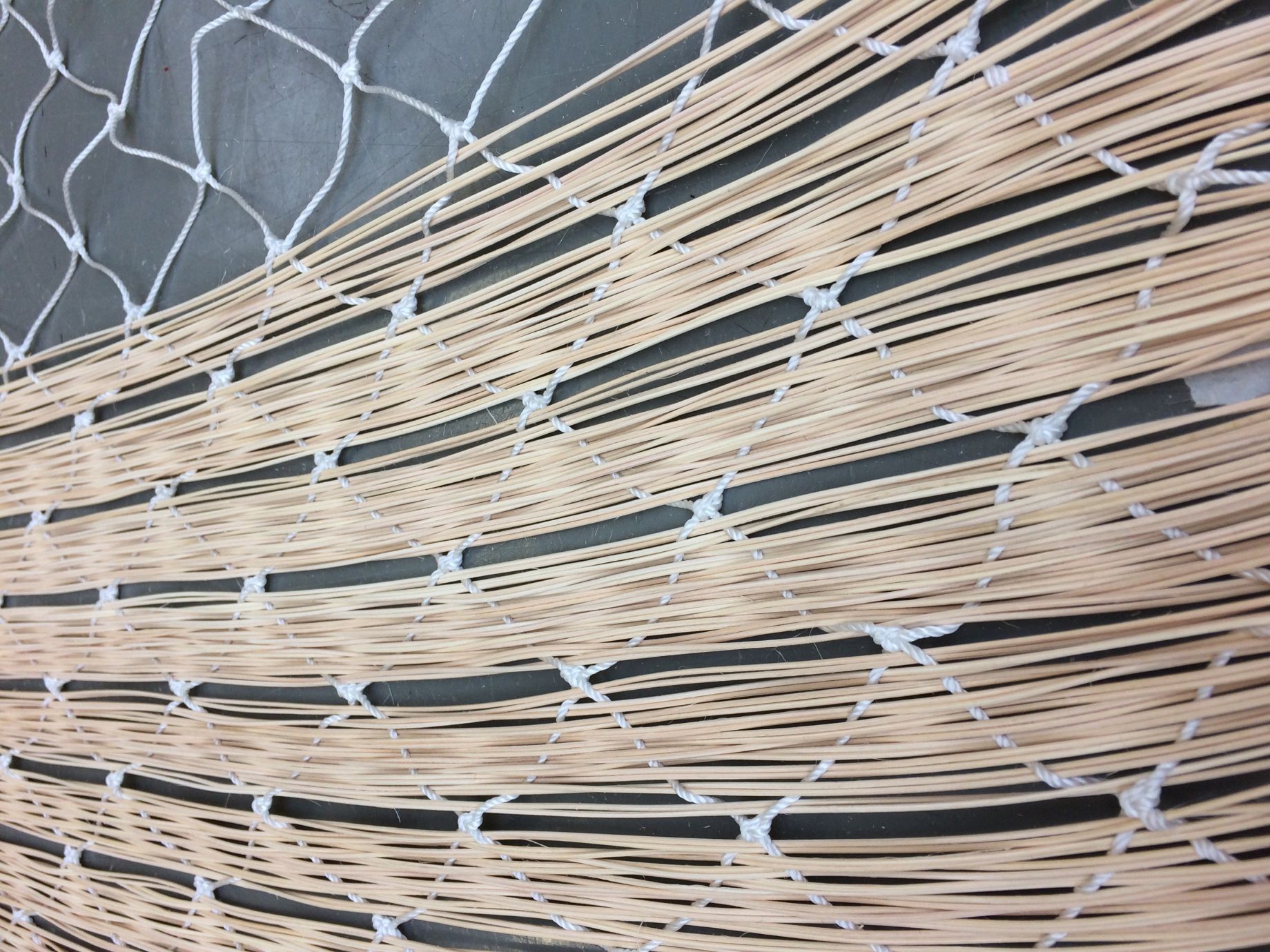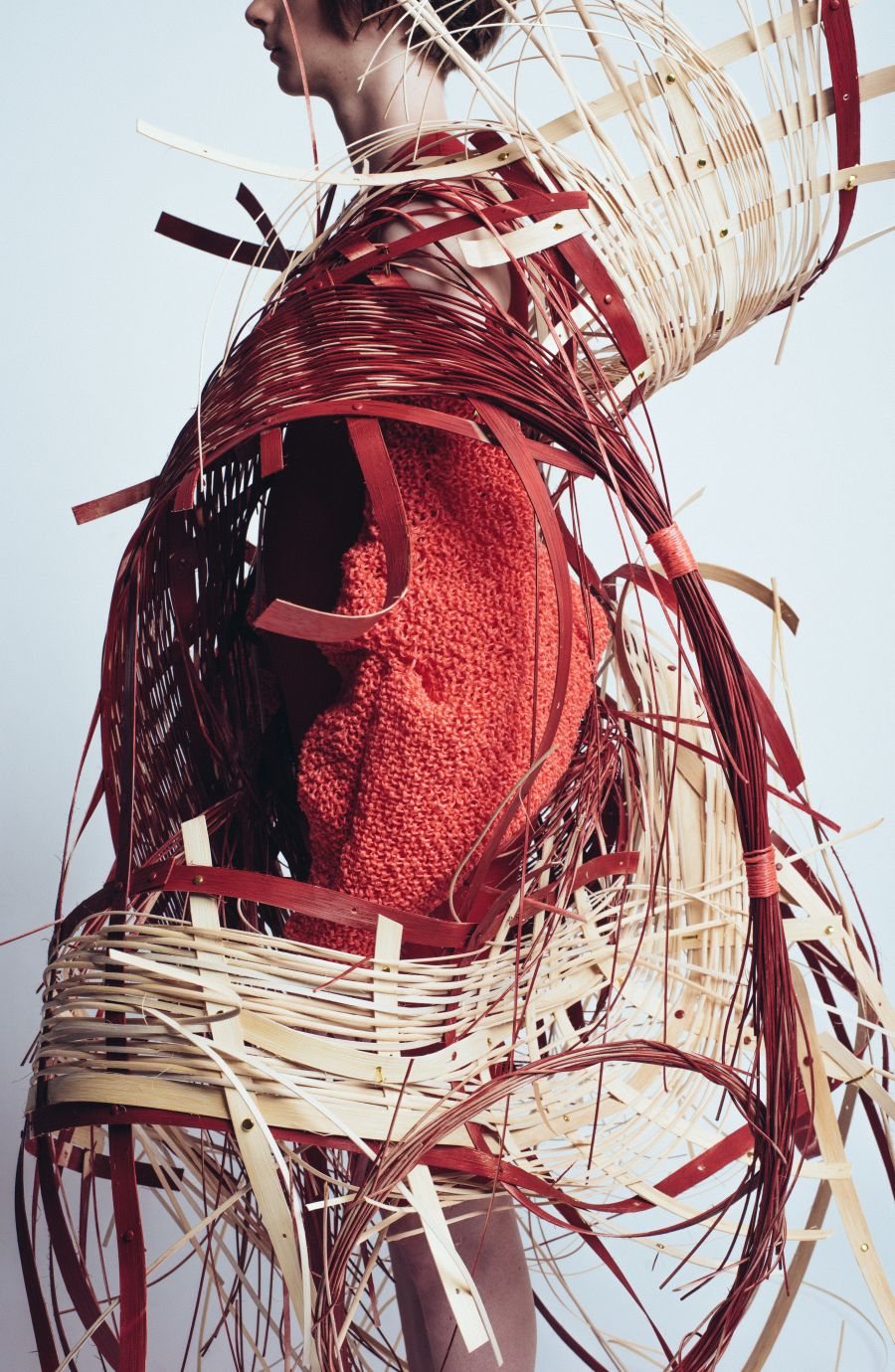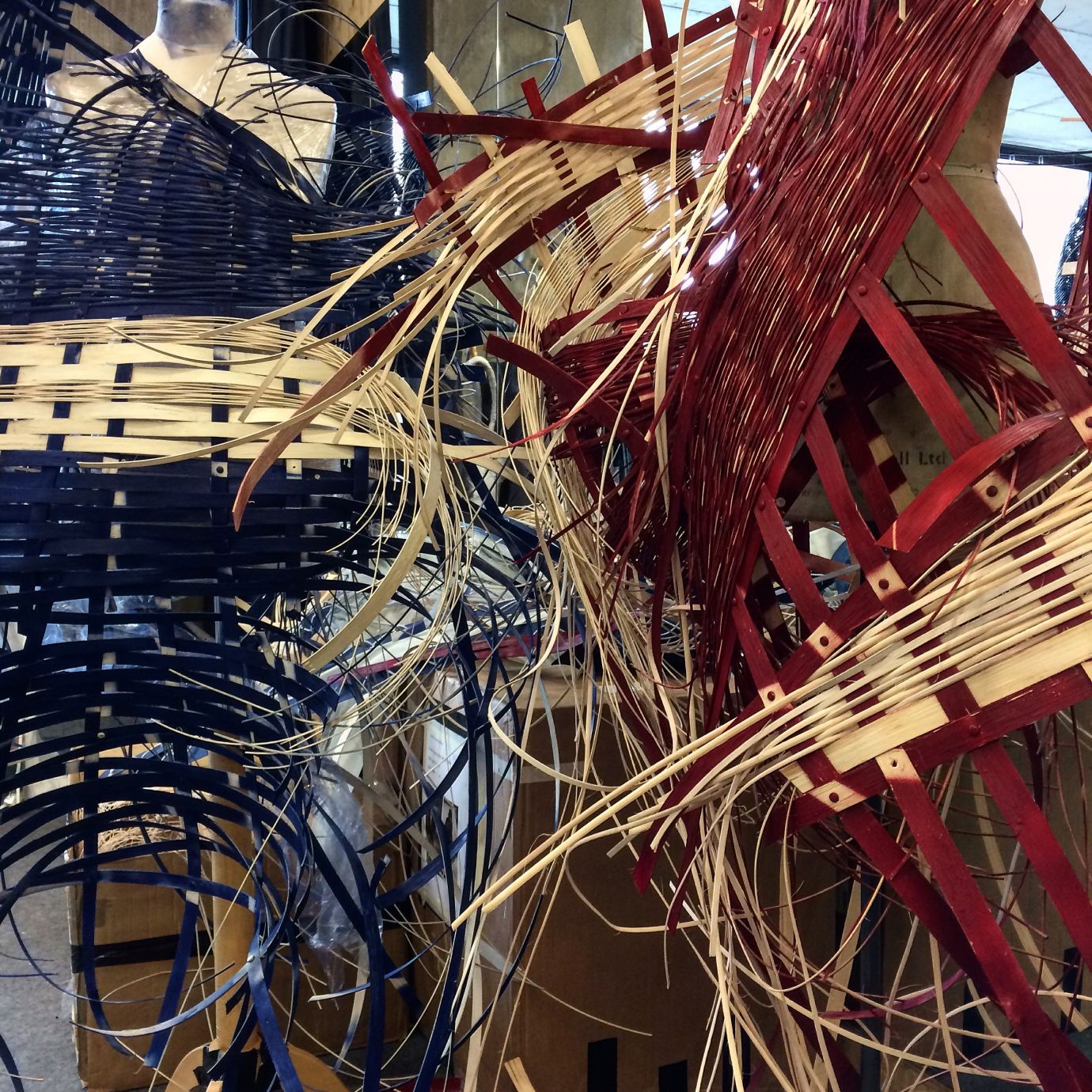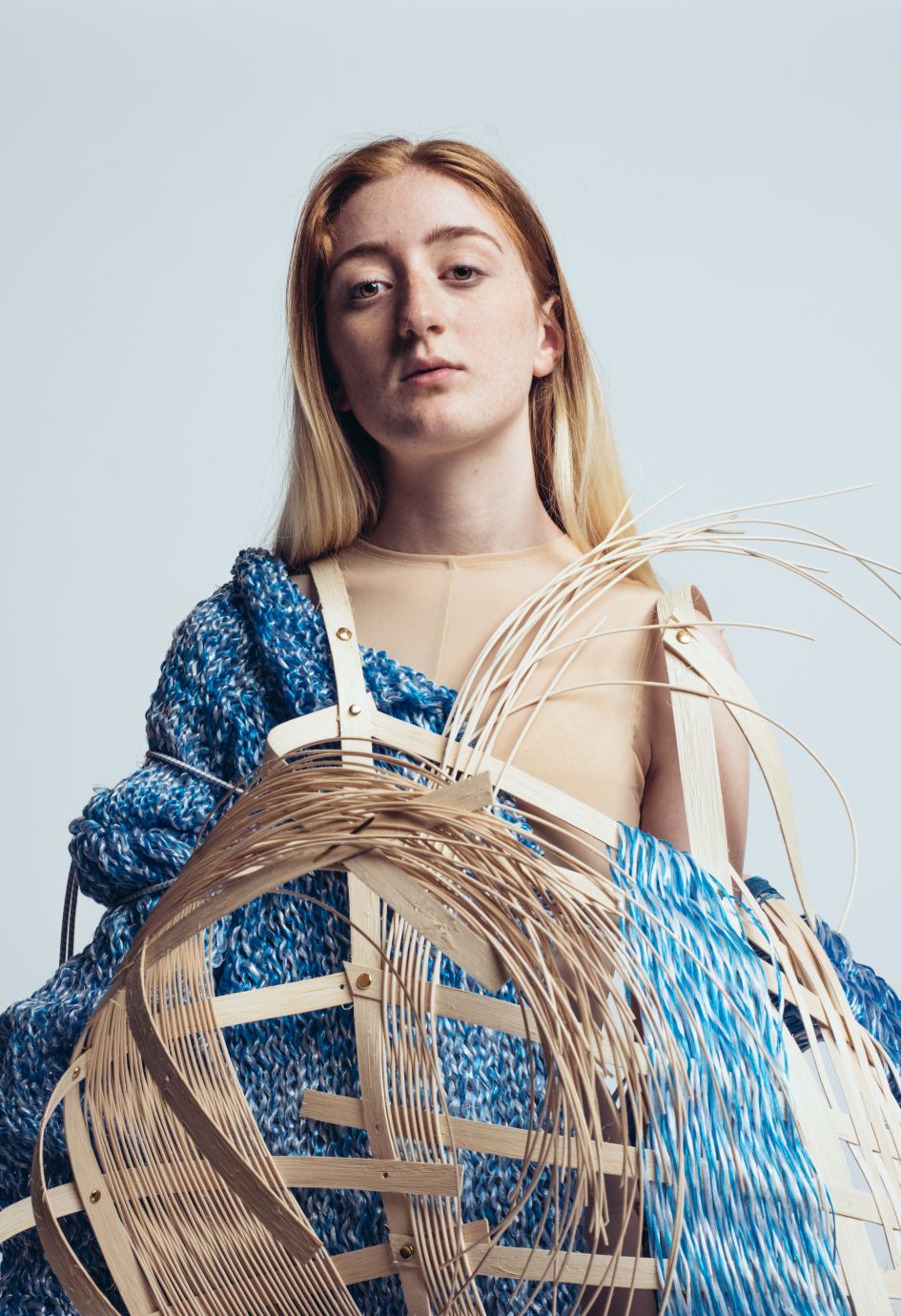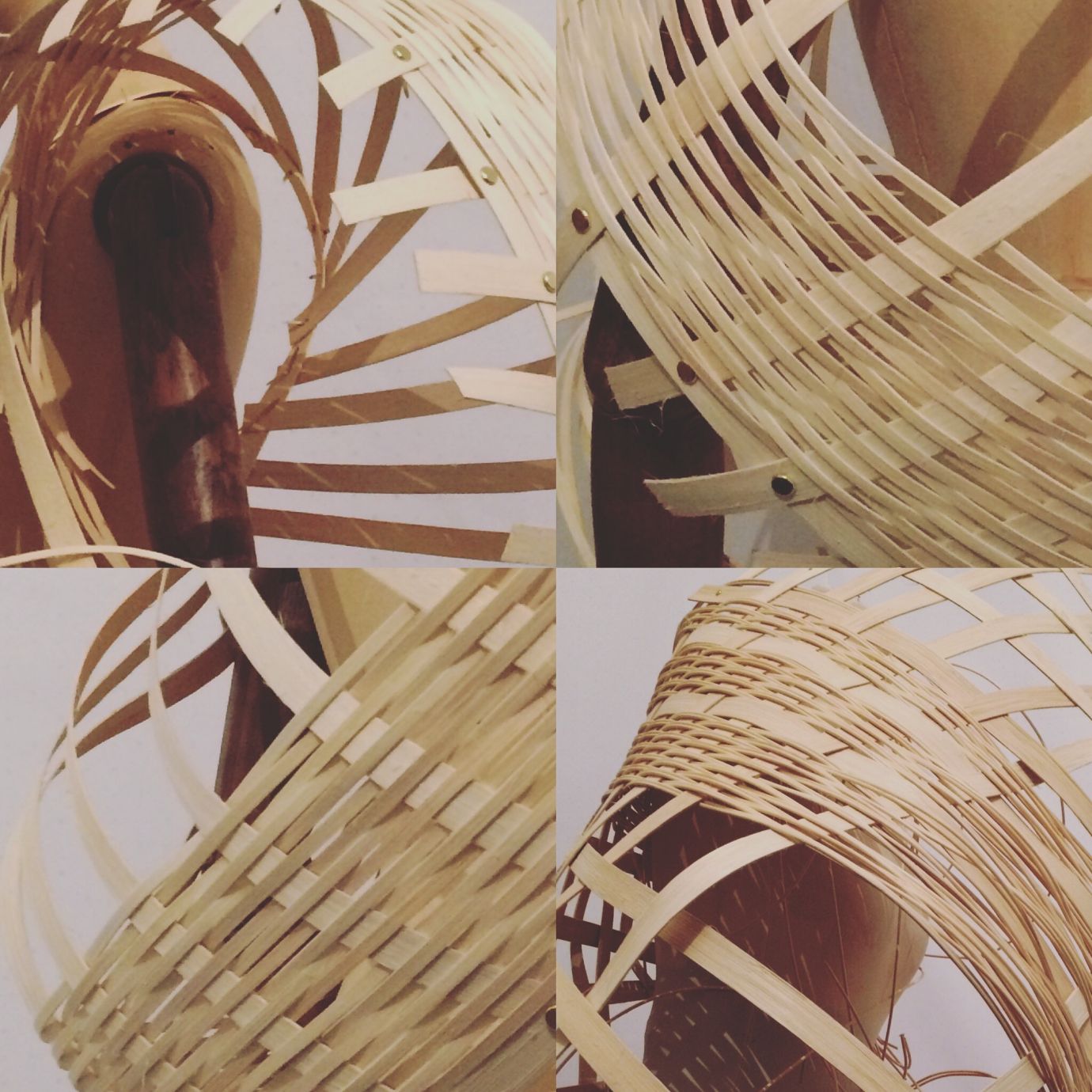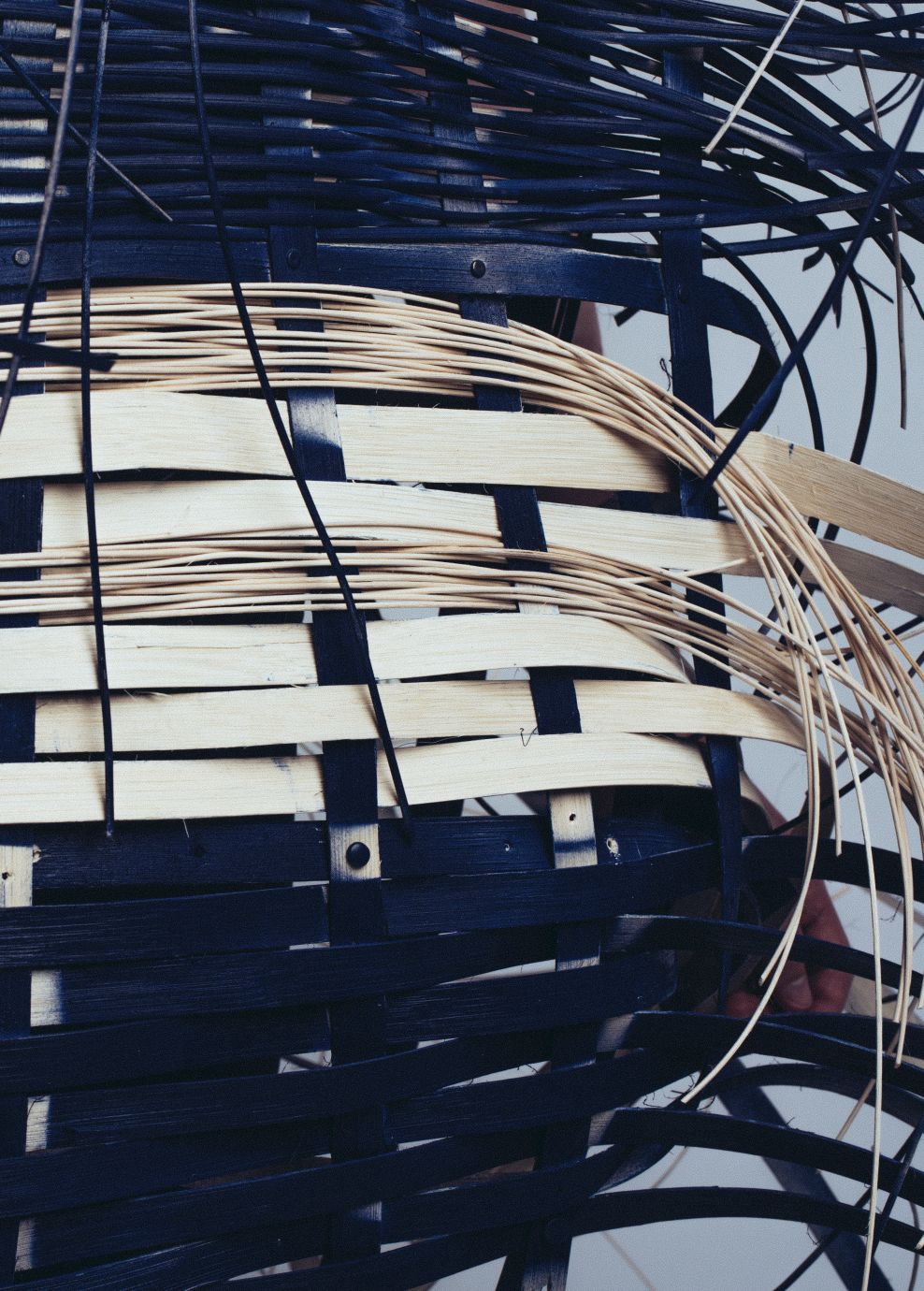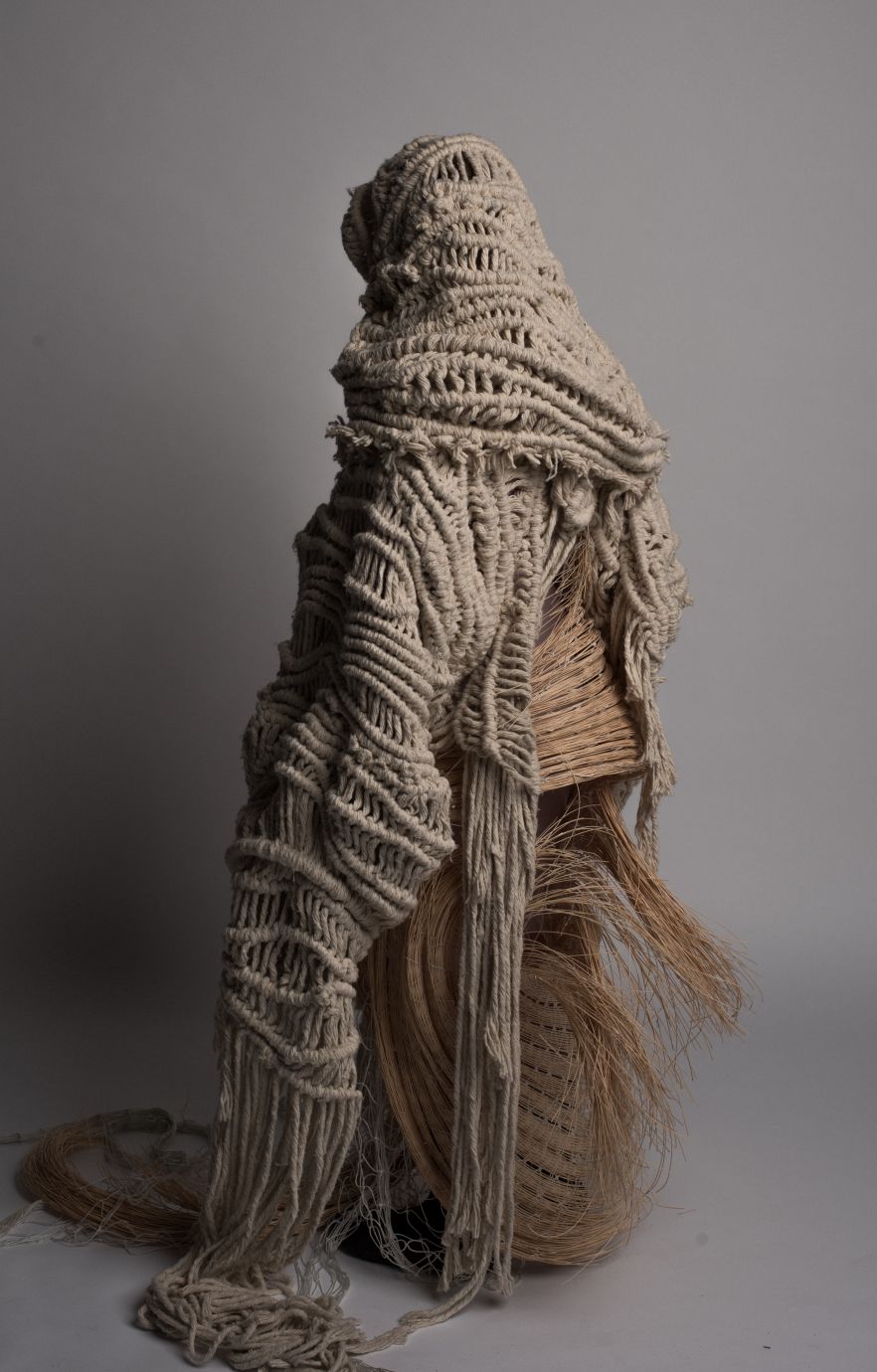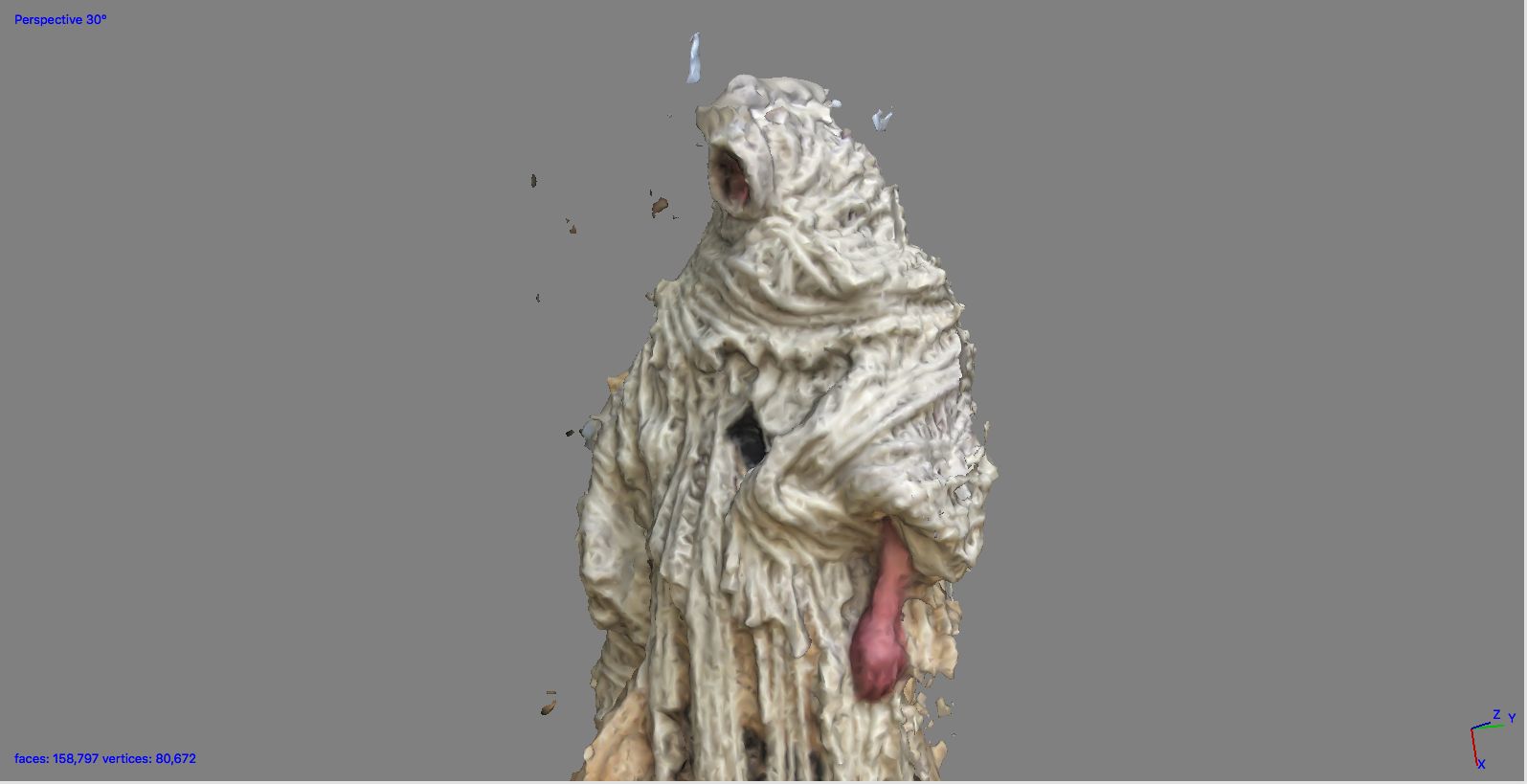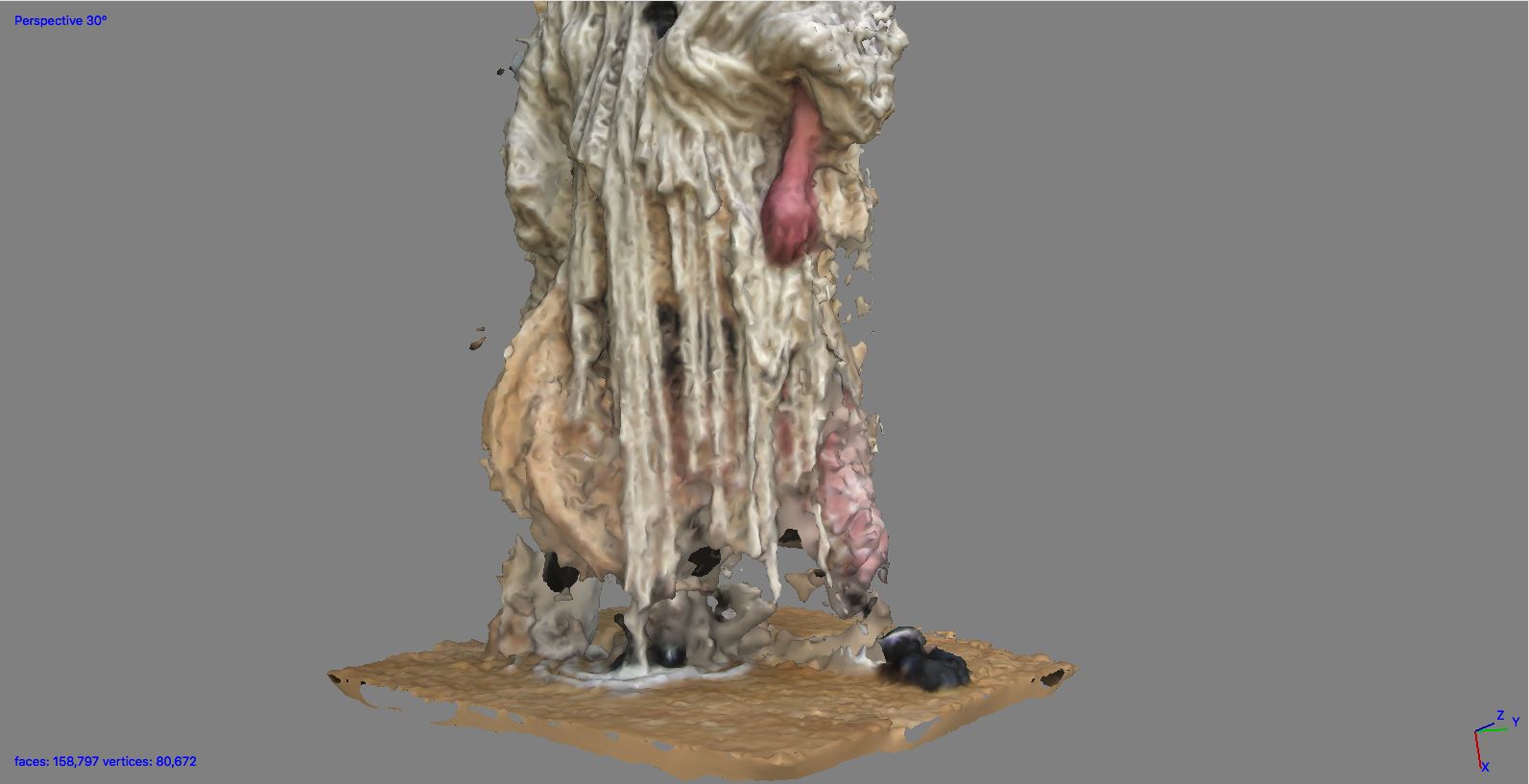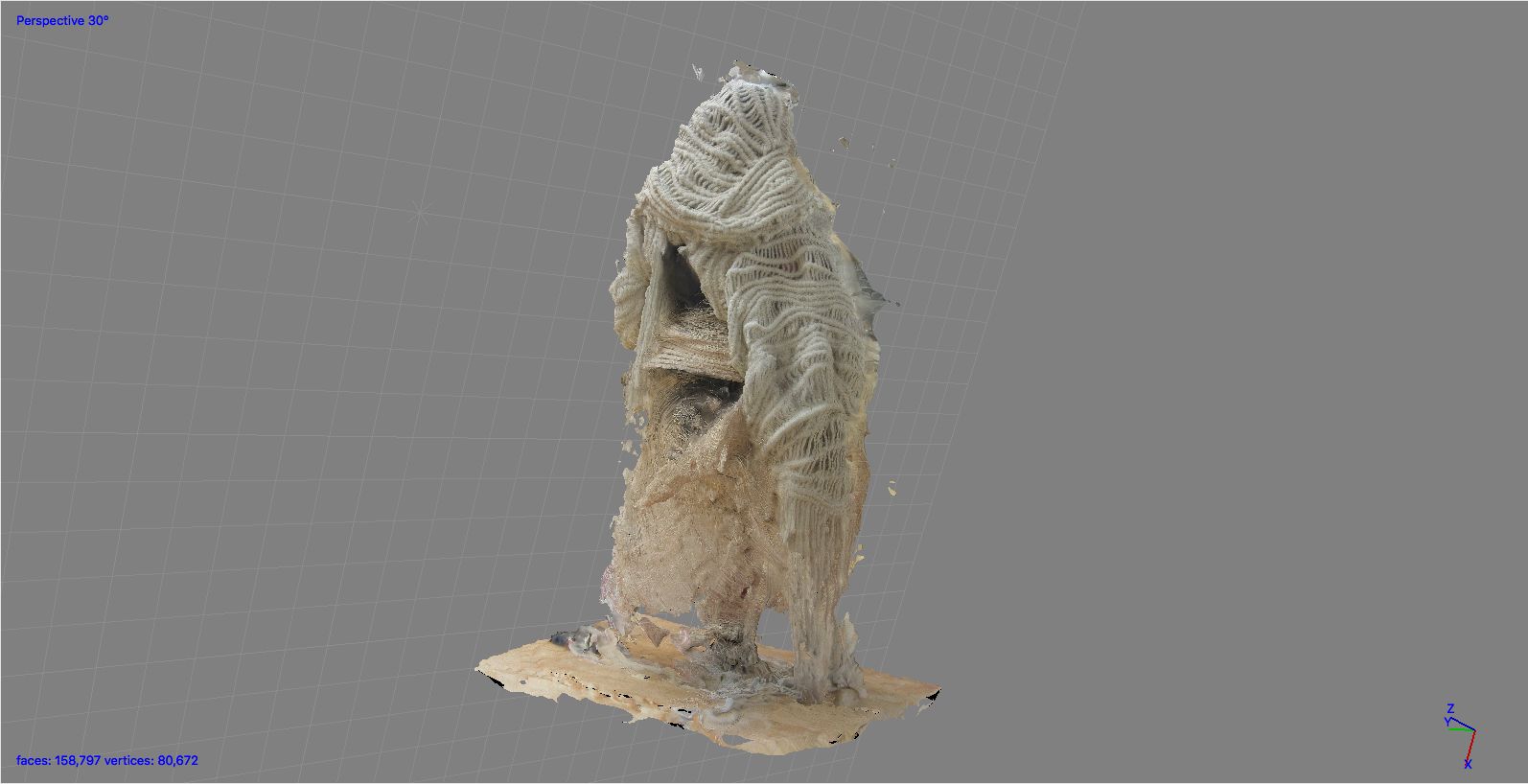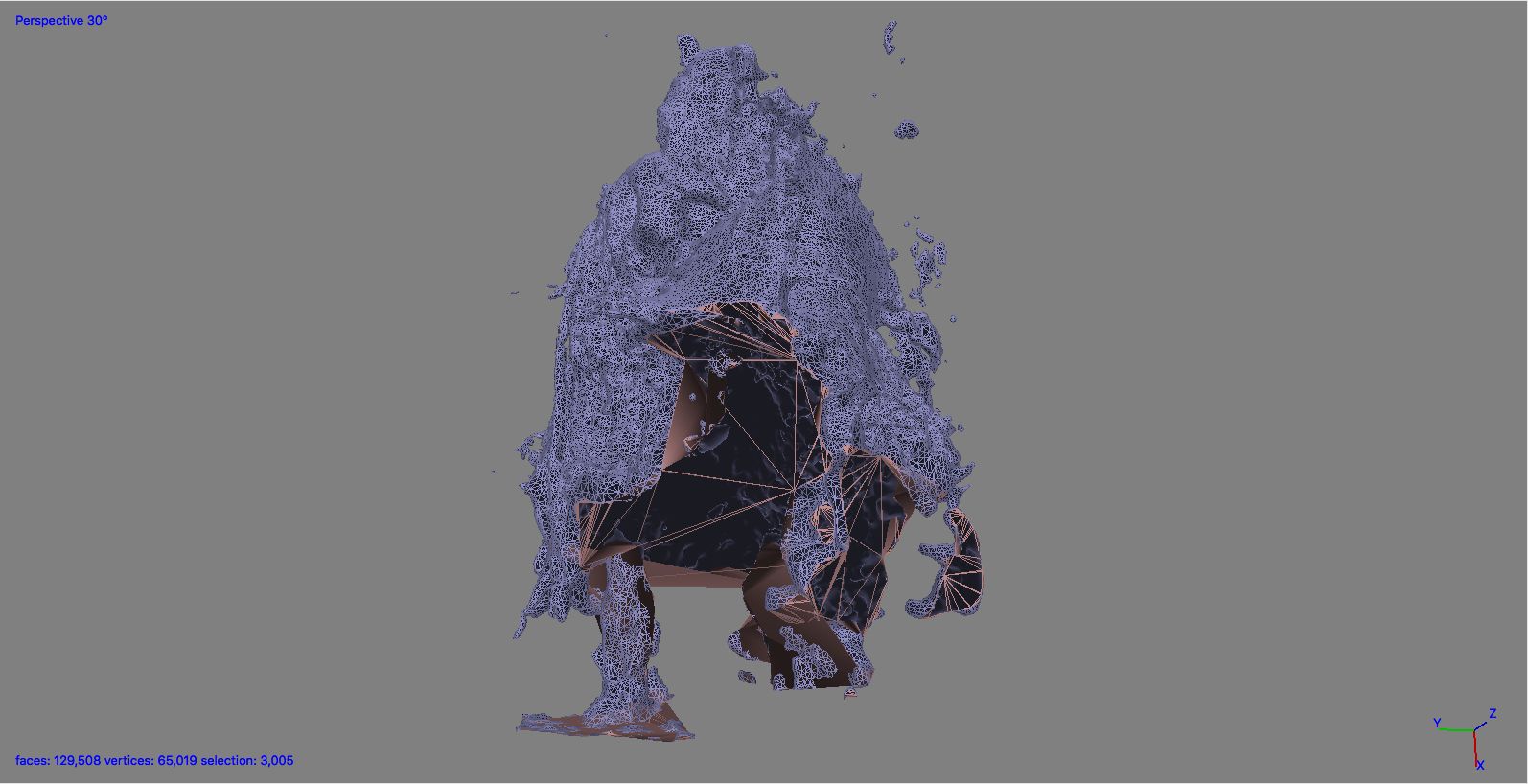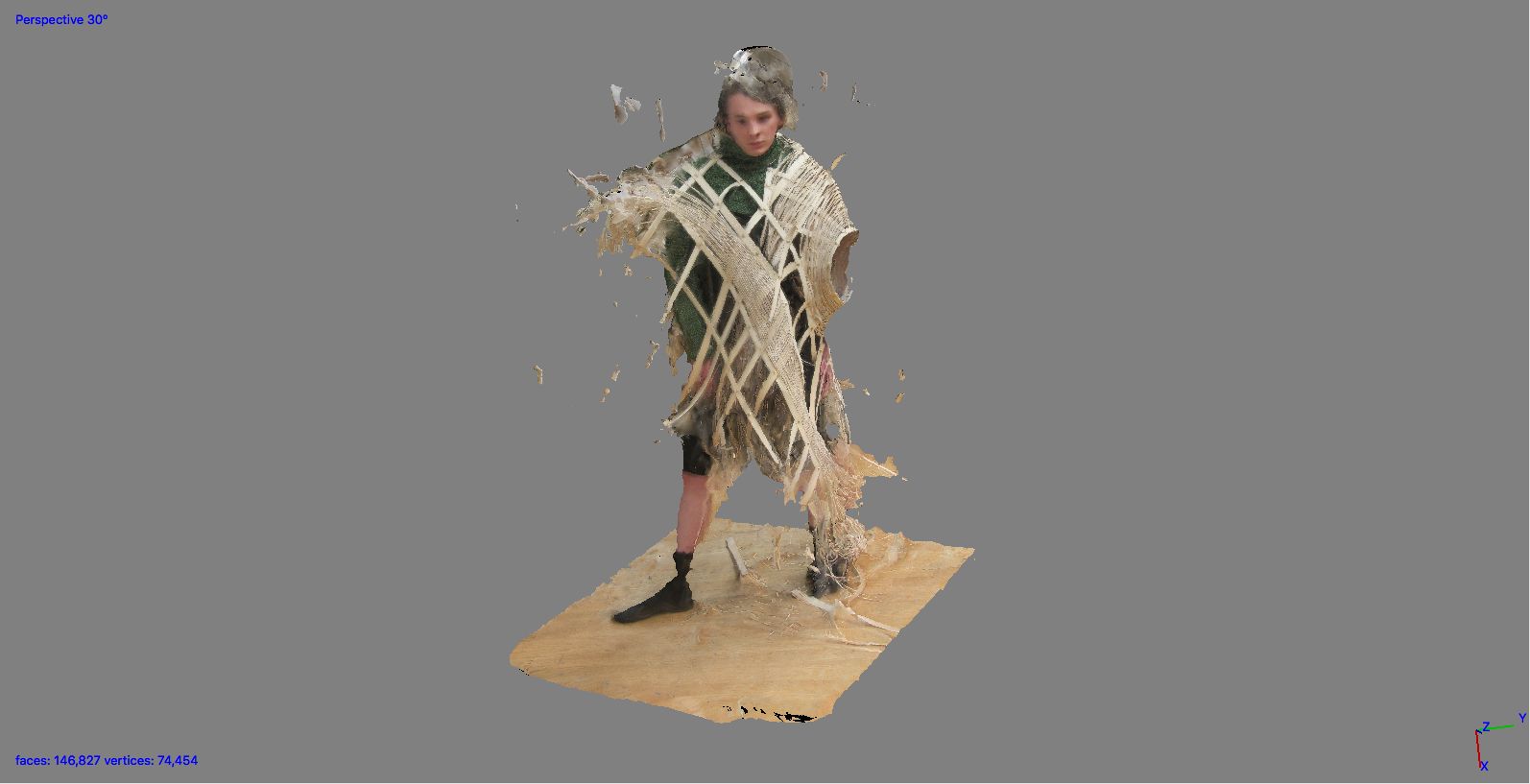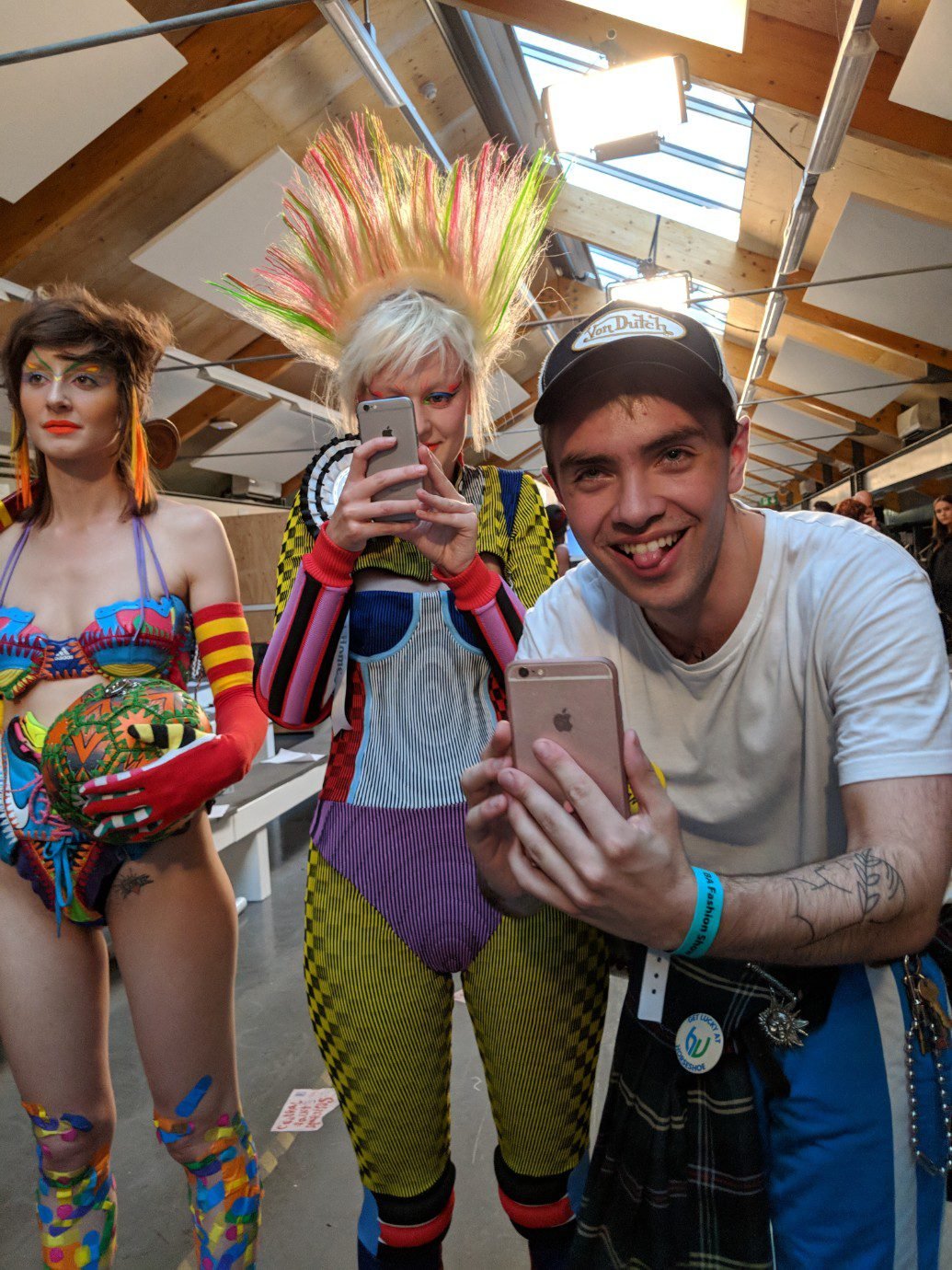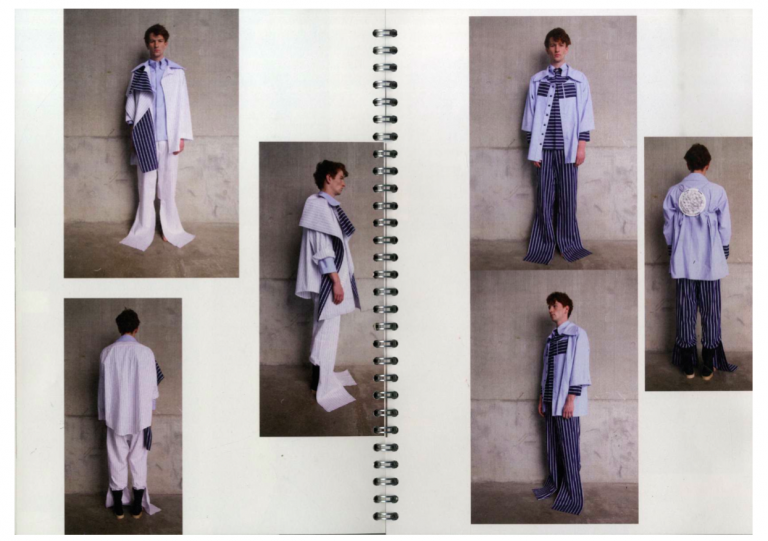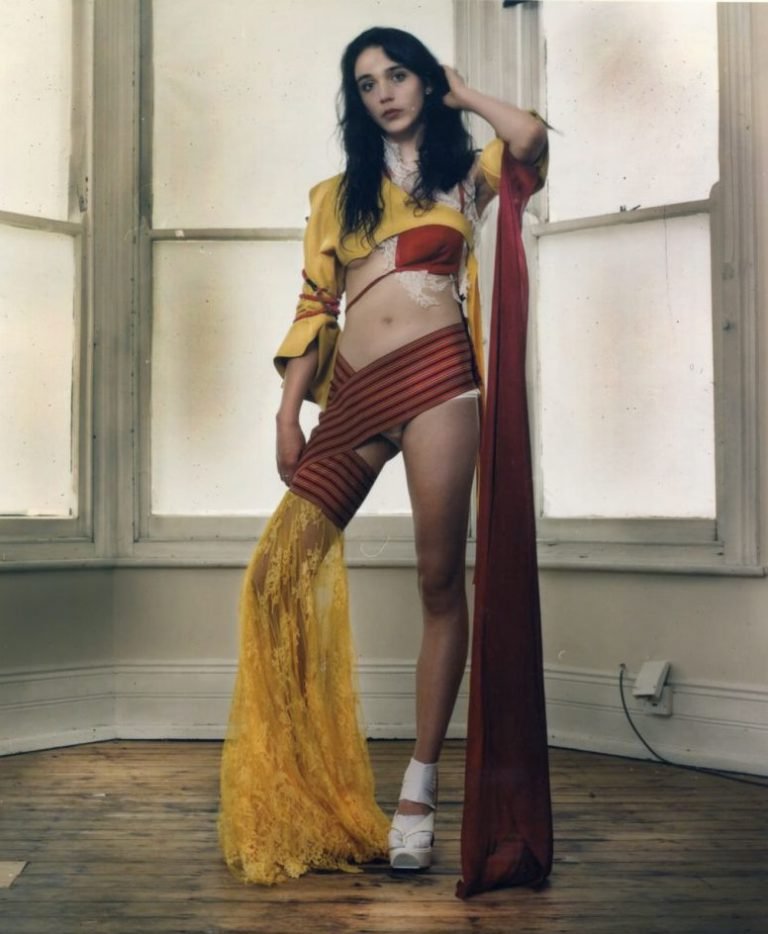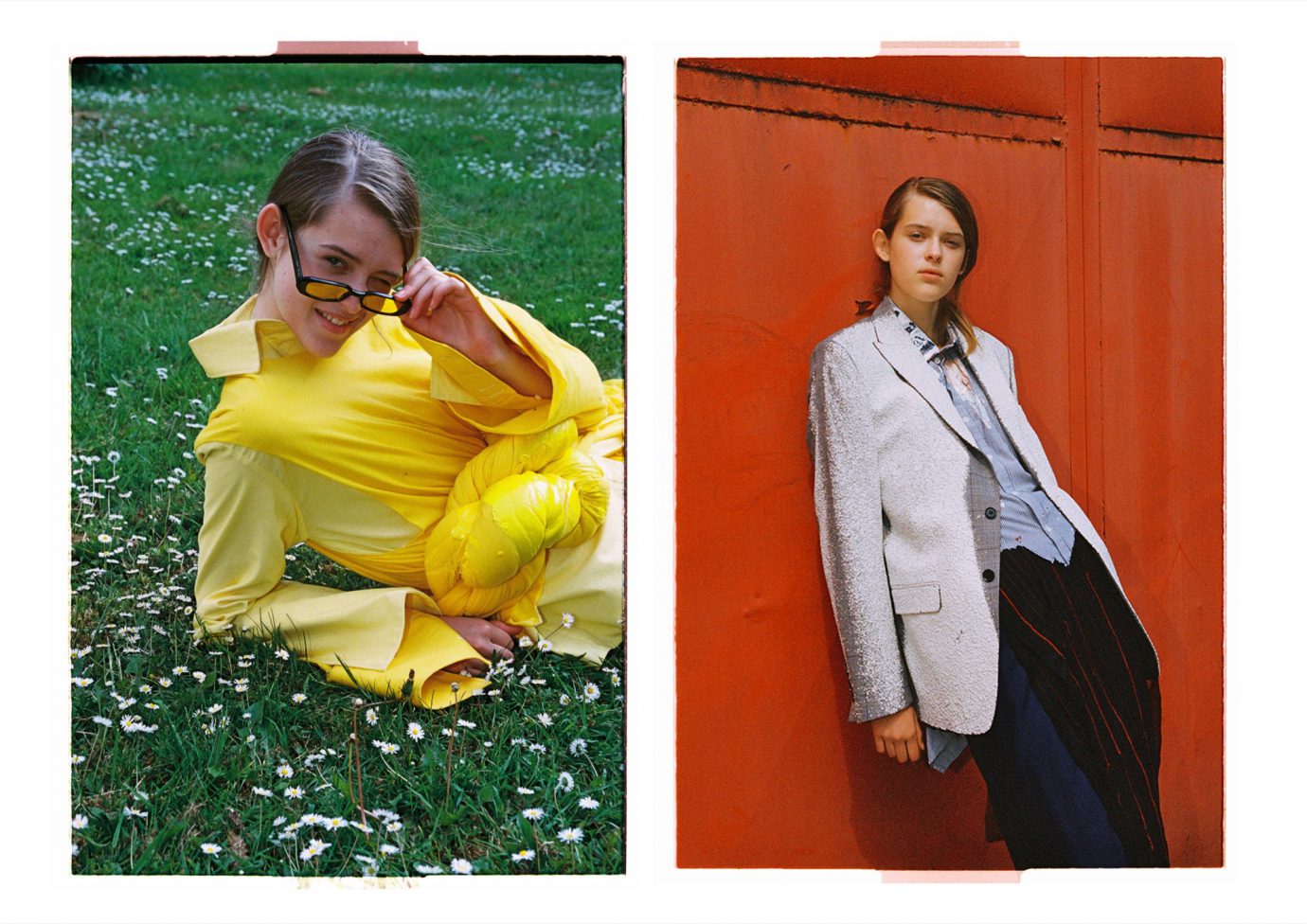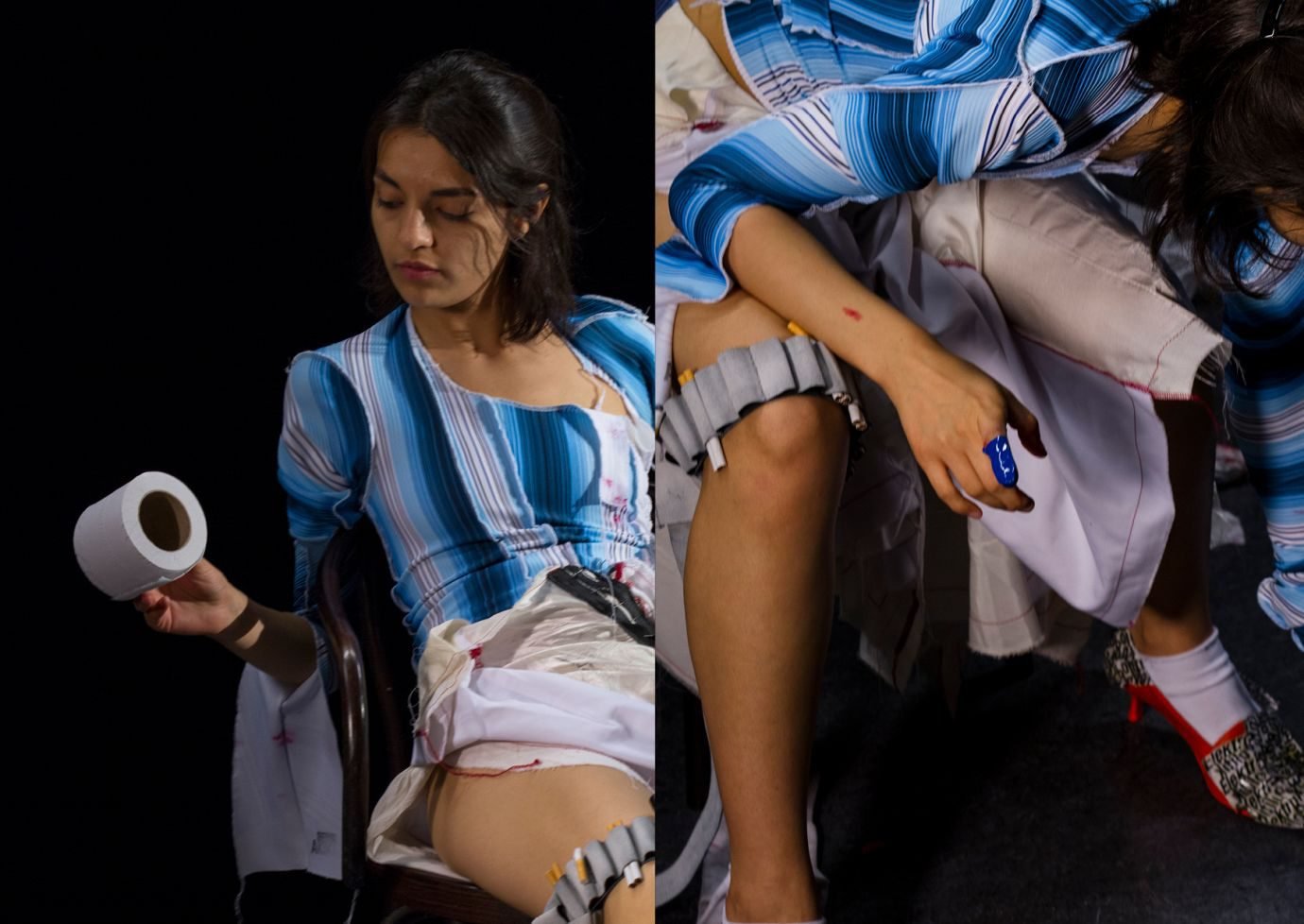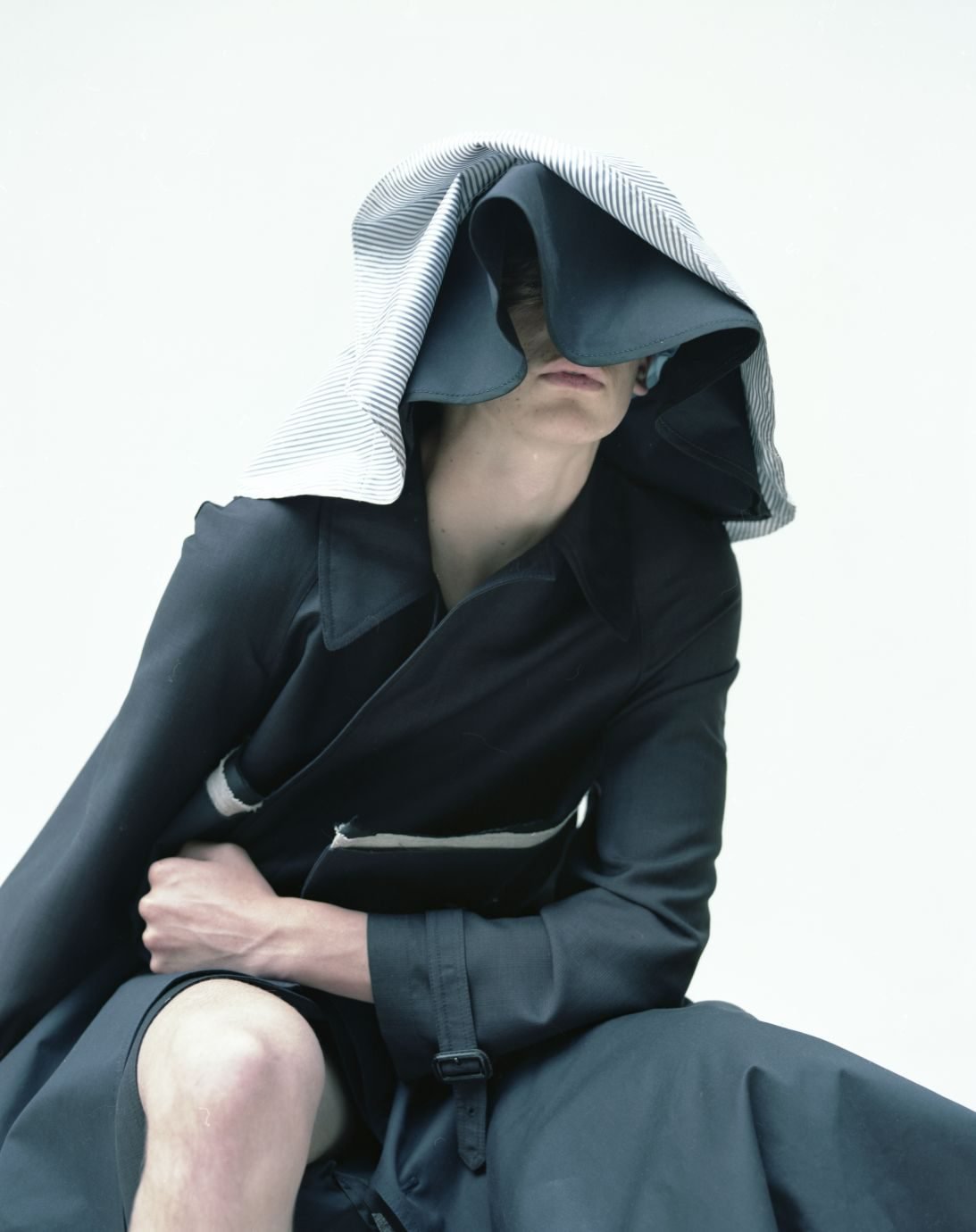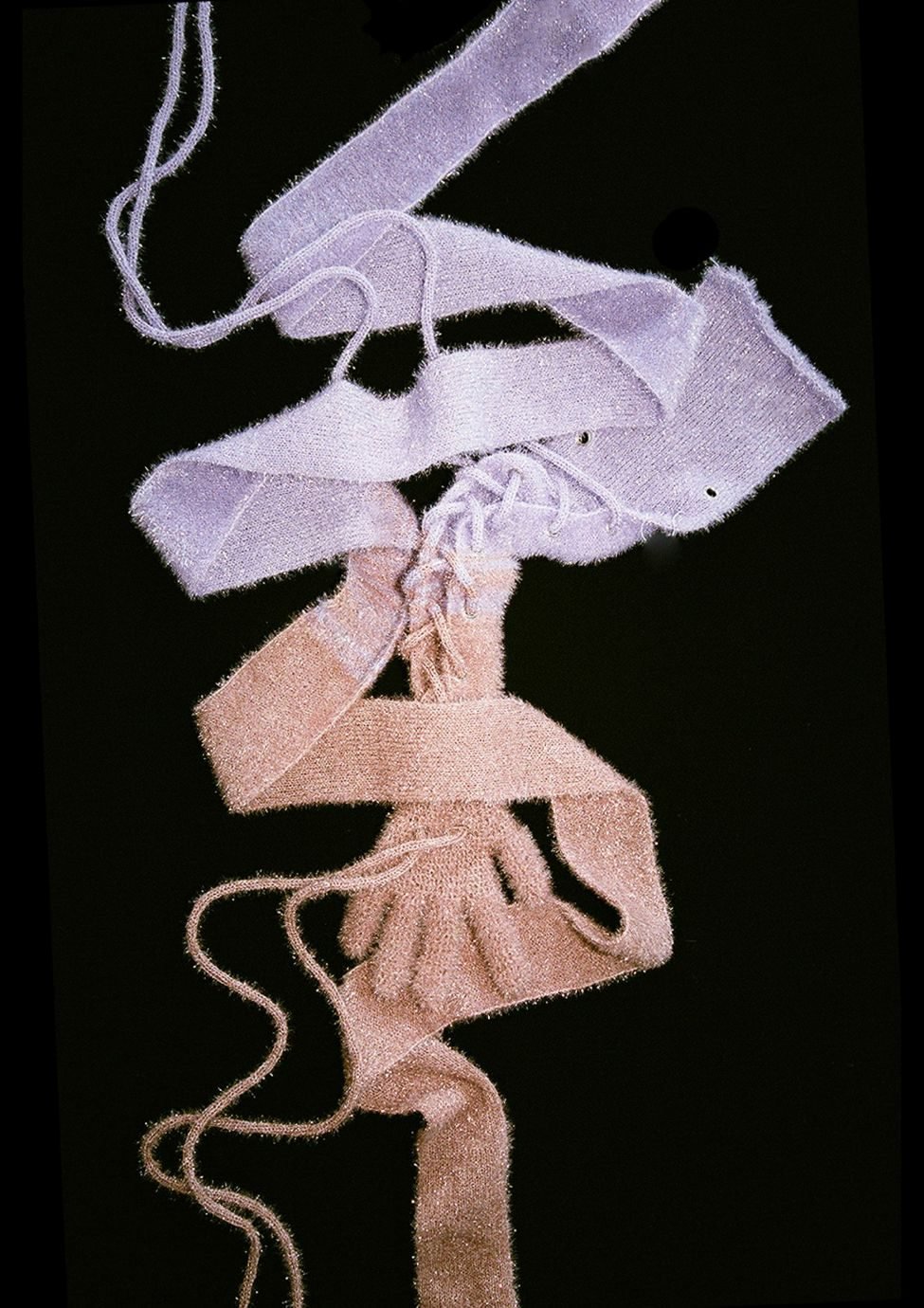It was evident that the natural setting of Sam’s hometown, Hastings, was of great inspiration. The fashion designers strikingly beautiful collection incorporated themes of coastal landscapes and the natural erosion that occurs on rocks. However there was an unnatural element that influenced the colour scheme, which was inspired by lobster pots, fishing nets and plastic debris, all features reminiscent of the seaside.
When their father introduced them to the material willow, the designer utilised it for various techniques, and began to style it around the body in their foundation year. After the material no longer met their creative demands, they moved to cane, a similar but more malleable type of wood. While other students worked from toiles, the designer benefited from a trial and improvement technique, where they would build sculptural pieces and place them onto a mannequin in order to identify the silhouette they wanted to create for the final look.


